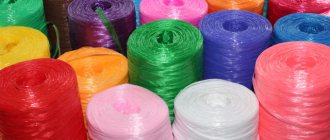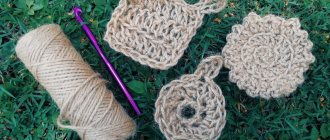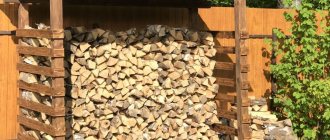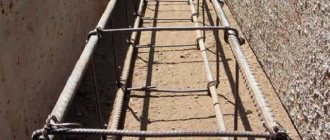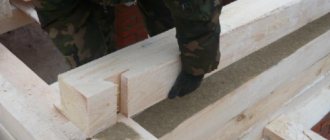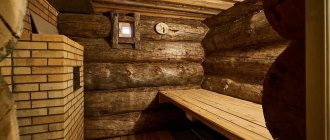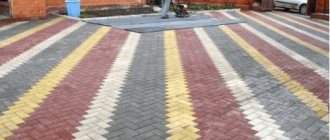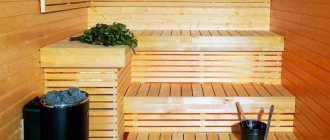Yes Yes Yes! I was not mistaken and your vision is fine. Oddly enough, today’s article is dedicated to the fair sex. Dear ladies, is your husband/brother/matchmaker/godfather/father-in-law/boss/friend a true connoisseur of velvet steam and a fragrant broom? In this case, red girls, you are incredibly lucky!
Why? Yes, because on the eve of this or that holiday you do not need to rack your brains over a gift. True “gourmets” of the sauna ceremony have a “burning passion” for accessories intended for use in the steam room.
So, for example, the most important item in the bathhouse is Her Majesty - the Washcloth. Her role is very difficult to overestimate. It has a cleansing, exfoliating, warming, anti-cellulite, activating, anti-inflammatory effect. No need to laugh. Gone are the days when a man had to be powerful, smelly and hairy.
In general, lovely ladies, a washcloth is a wonderful gift for a lover of bath procedures. I think there will be no difficulties in purchasing it, since the market is replete with all sorts of bath products. However, if you want to amaze a man to the depths of his soul, do not buy it, but make it yourself. And I’ll tell you how to knit a washcloth.
Crochet flat washcloth
Crochet flat washcloth
The flat washcloth knits quickly, does not stretch out and lasts a long time. This flat crochet washcloth is suitable for washing in the bathhouse and shower. It's convenient to wash your back with.
The knitting pattern for a flat washcloth is simple. Even a novice craftswoman can figure it out.
Flat crocheted washcloth - diagram
Tip: Knit such a washcloth with the “fur” or “fringe” pattern with long loops, which was described above.
Tie the edges with a contrasting thread in two single crochets. Tie chains of 40 loops on the sides - these will be handles.
Video lesson:
Lush loofah
To make the washcloth look fluffy, you need to use a polypropylene thread folded in half. We begin the work with a set of thirty air loops and connect them with a ring. We knit a single crochet into each of the air loops. In the next row, single crochets alternate with single crochets. Then the same pattern is repeated.
How to knit a washcloth with knitting needles for beginners?
How to knit a washcloth with knitting needles for beginners?
If you don’t like crocheting, or this technique for creating products doesn’t work for you, then try crocheting a washcloth with knitting needles. Prepare regular long knitting needles No. 3 or No. 4 and synthetic polypropylene threads.
How to knit a washcloth with knitting needles for beginners? Follow these steps:
- Cast on 30 stitches and knit 5 rows in stockinette stitch
- In the 6th row, remove the first loop, and knit the second in this way: hook the loop with a knitting needle, as when knitting with stockinette stitch, and place the thread over the knitting needle, which lies on your finger. Wrap the knitting needle and finger twice with thread and knit with a knit stitch. The third loop is knit, and the fourth is like the second, and so on until the end of the row.
- Row 7 – slip the first stitch and knit the rest in stockinette stitch
- Knit the 8th row like the 6th and so on
- When the required length of the washcloth is knitted, make 5 rows in stockinette stitch
- Knit two strips by casting on 40 stitches and knitting 3 rows in stockinette stitch. Close the loops and sew strips along the edges of the washcloth for ease of use
Washcloth with knitting needles with elongated loops - diagram
Washcloth with knitting needles with elongated loops - diagram
The elongated loops are the same size, so this knitting looks beautiful. Try knitting a washcloth in this way, and then use this technique to create a hat, sweater or cardigan for your baby.
Washcloth with knitting needles with elongated loops - diagram:
Sponge with knitting needles - diagram
Video lesson:
Good day, dear readers!
Yes Yes Yes! I was not mistaken and your vision is fine. Oddly enough, today’s article is dedicated to the fair sex. Dear ladies, is your husband/brother/matchmaker/godfather/father-in-law/boss/friend a true connoisseur of velvet steam and a fragrant broom? In this case, red girls, you are incredibly lucky!
Why? Yes, because on the eve of this or that holiday you do not need to rack your brains over a gift. True “gourmets” of the sauna ceremony have a “burning passion” for accessories intended for use in the steam room.
So, for example, the most important item in the bathhouse is Her Majesty - the Washcloth. Her role is very difficult to overestimate. It has a cleansing, exfoliating, warming, anti-cellulite, activating, anti-inflammatory effect. No need to laugh. Gone are the days when a man had to be powerful, smelly and hairy.
In general, lovely ladies, a washcloth is a wonderful gift for a lover of bath procedures. I think there will be no difficulties in purchasing it, since the market is replete with all sorts of bath products. However, if you want to amaze a man to the depths of his soul, do not buy it, but make it yourself. And I’ll tell you how to knit a washcloth.
From this article you will learn:
DIY jute washcloth
DIY jute washcloth
Jute is a natural fiber. A DIY jute washcloth is an environmentally friendly product that will perfectly exfoliate dead epidermal cells and combat skin contamination. This personal hygiene item provides an excellent peeling effect.
Important: Flat washcloths are knitted from jute, both knitted and crocheted. The pattern can be whatever you like.
DIY birch bark washcloth
DIY birch bark washcloth
A birch bark washcloth or “birch bark” is a personal hygiene item made from natural material.
To make such a washcloth, take birch bark, cut it into strips and tie it at one end. You will get a round ball that can be used for going to the bathhouse.
You can make a birch bark washcloth with your own hands in another way:
- Take a piece of birch bark 20cm x 20cm
- In the middle of this square, mark a strip 3cm wide
- Cut the birch bark on both sides of the mark into narrow strips
- Roll the workpiece into a tube and tie it in the middle. It turned out to be an excellent washcloth for a bath
Important: Before use, the birch bark product must be steamed by holding it in boiling water for several minutes.
History of macrame
Macrame originated in a time when there were no threads - at first they used herbs and animal hair. They were used to create the first nets for catching fish and birds.
At first, fishing nets were made using macrame.
Later, sailors of the sailing fleet improved this technique. Due to their duty, they knew how to tie dozens of different sea knots. In their free time, they had fun by making knots around their belongings: flasks, knife handles, bottles, etc.
In the 14th century, knowledge went further, and the macrame technique began to be used on land. Over time, it became very popular among needlewomen, and they began to create real works of art.
How to make a bast washcloth with handles?
The bast is the inner part of the linden bark. How to make a bast washcloth with handles?
This product can be made simply and quickly.
First method: Fold the bast threads in half and tie them lightly with a loose knot.
How to make a bast washcloth with handles? First way
Second method: Fold the bast threads in half and tie, retreating 5-7 cm from the bend.
How to make a bast washcloth with handles? Second way
Important: To make the bast sponge soft, it needs to be steamed in boiling water, just like “birch bark”.
You can sew a bast washcloth this way:
- Take the bast threads
- Place them on a flat surface and straighten them
- Sew the workpiece in a chaotic manner on a sewing machine or make several even lines
- Sew trim and handles along the edges
How to sew a bast washcloth with handles?
Main nodes
Over the course of thousands of years of existence, the macrame technique has absorbed many different methods of weaving knots. In every corner of the Earth this art may have its own characteristics.
Weaving is divided into several main categories:
- Decorative, these knots are not intertwined with each other, but are performed separately. Designed for decorative design of any detail. For example, to hide a button on a product;
- Working, such knots are considered the simplest; they are used for weaving jewelry, linens and serious products;
- Auxiliary, these nodes are intended for reliable fixation of threads after completion of work with the product;
- Chinese craftswomen classify this weaving method in a special category, since it is special in the complexity and originality of the patterns created.
For a clear example, it is advisable to look at photos of the macrame technique and the main components.
DIY mesh washcloth
DIY mesh washcloth
Vegetable mesh is soft and therefore suitable for creating a washcloth. You can take a new mesh on a roll, but a used one will also work. DIY mesh washcloth:
- Wash the mesh after use (if you have a used mesh), and dry
- Cast on 10 mesh loops on the knitting needles and knit according to the “ribbon yarn scarf” principle. The loops should be loose and not tight
- You will get several rows of purl stitch.
- Then roll the product into a ring and secure the knitting with a hook or needle and thread
DIY washcloth made from new mesh
Kese washcloth
Kese washcloth
In the Turkish baths - hammam, they use soft washcloths in the form of mittens made from sheep's wool. You can sew a kese washcloth yourself:
- Take a piece of sheep's wool. If there is no such material, you can use any other, but soft and delicate texture
- Cut out two parts so that the finished washcloth can be easily put on your hand
- Sew these parts and trim with binding
- Make a handle - the washcloth is ready
"Bumps"
This is a beautiful and colorful handicraft, which is a real pleasure to use. For this task you will need to use equipment No. 5 and yarn of several colors.
The procedure consists of weaving a line of thirty-six loops, which is subsequently secured into a circle.
Step by step guide:
- The first row is created using single crochet risers.
- From the 2nd to the fourth line it is worth taking cap columns.
- The image of cones is used as the main image of the washcloth. They are created to a maximum horizontal level determined by the wizard. The element consists of three yarn overs woven together. The cones alternate through two risers. Tip: The oval pattern should be staggered.
- Since the “circle” weaving model is used, you should finish the needlework according to the same pattern in which you started, only in reverse order.
- If you want to create handles, you can go two different ways: knit them separately and secure them, or start working on one and then move on to the second. The choice is yours.
DIY bath sponges made of twine
DIY bath sponges made of twine
Twine can be polypropylene or natural. Most often, synthetic threads are used to weave washcloths, as they are stronger and come in a variety of colors.
Do-it-yourself bath washcloths made of synthetic or natural twine are knitted according to the patterns described above.
Tip: You can make a flat washcloth or a product with elongated loops, as you like.
Materials
Natural and synthetic materials are used for knitting washcloths. A washcloth made of natural cotton or linen, for example, is suitable for small children or people with very sensitive skin. Such products last very little because Mold quickly appears in natural fibers and can rot.
A washcloth can be knitted from the following materials:
- Linen and cotton. The washcloths are very gentle on the skin, but last no more than a month.
- Polypropylene. The threads look like soft plastic strands. This washcloth lasts for several months, holds foam well and cleanses the skin efficiently.
- Tourniquet. It comes in polypropylene, jute and linen.
- Sisal. Made from agave fibers. The stiff fiber is great for use with scrubs.
- Polyethylene. To knit washcloths, you can use old bags cut into strips.
- Capron. A flat washcloth can be made from old tights.
- Sock additive. Stiff threads that are added to the warp yarn when knitting the heels of socks.
- Viscose is a thread made from wood fiber.
- Acrylic.
- Sackcloth.
To ensure that the finished knitted washcloth not only looks impressive in the photo, but is also soft, after finishing work it is immersed in hot water for 15 minutes.For knitting, hooks with a rounded head are used. The diameter of the hook depends on the thickness of the material used.
DIY washcloths made from nylon tights
DIY threads for washcloths from nylon tights
After the cold season, every woman has many pairs of worn and already torn nylon tights. Most often, ladies throw them away, but real needlewomen find a use for such things.
It’s easy to make washcloths from nylon tights with your own hands:
- Cut off the top part of the tights. You only need the lower part - stockings
- Cut the workpiece into strips 3-3.5 cm wide. These strips will be the threads for knitting
- Now knit as you like - crochet or knit
Important: Products made from tights are not knitted with elongated stitches. Make a flat washcloth according to the patterns described above for creating polypropylene products.
Capron
Women's tights that have become unusable can find a second life. Describing such crafts from scratch does not take much time. Creating nylon graters is very simple.
Note!
How to crochet a mouse and a rat: video master class on crocheting the 2020 symbol
How to knit a warm hat with ears for a newborn boy and girl - video tutorials with patterns, instructions for beginners
How to crochet a beautiful scarf: video master class on creating unusual, beautiful, simple scarves for boys, girls, men and women
Sisal washcloth
Sisal washcloth
Sisal is a natural fiber that is obtained from the leaves of Agava sisolana. Needlewomen willingly make washcloths from it - for massage and for washing.
How to do it - steps:
- The sisal washcloth should be flat
- To create it, cast on 30 loops and knit or crochet in any pattern. You can even use stockinette stitch if knitting, or single crochet if crocheting
- Fold the edges, first inserting handles from an old washcloth, and sew. You can simply sew handles knitted from the same threads
Accessories
For needlework you will need the following materials and tools:
- Measuring tape, you can use a ruler, but it is not so convenient for taking measurements;
- Large crochet hooks;
- Pins for fixation;
- A hard pillow for creating horizontal weaving patterns;
- Glue;
- Scissors;
- Hanging weights, leveling threads;
- Professional clamps for textile work are a kind of vice that fixes vertical threads;
- Rhinestones, buttons, beads and other decorations suitable for bringing the craftswoman's ideas to life.
How to knit a one-sided washcloth?
How to knit a one-sided washcloth?
A one-sided washcloth is the simplest model that is suitable for beginner craftswomen, despite the fact that elongated loops are used to create it. How to knit a one-sided washcloth?
Depending on the material used, a washcloth with a one-sided pattern should be knitted in one or two threads. If with one thread, then crochet the product, and with two threads - with knitting needles. Choose any knitting technique at your discretion, for example, as in the video below.
About technology
At the very beginning of its development, this applied art was aimed at practical purposes.
Using this weaving technique the following were made:
- Cloth;
- Tackle;
- Various things useful for everyday life.
Gradually it turned into art.
Photos of beautiful do-it-yourself washcloths for showers and baths
It seems that the washcloths are all the same, differing only in color. But real needlewomen create interesting products for their family and friends.
source
